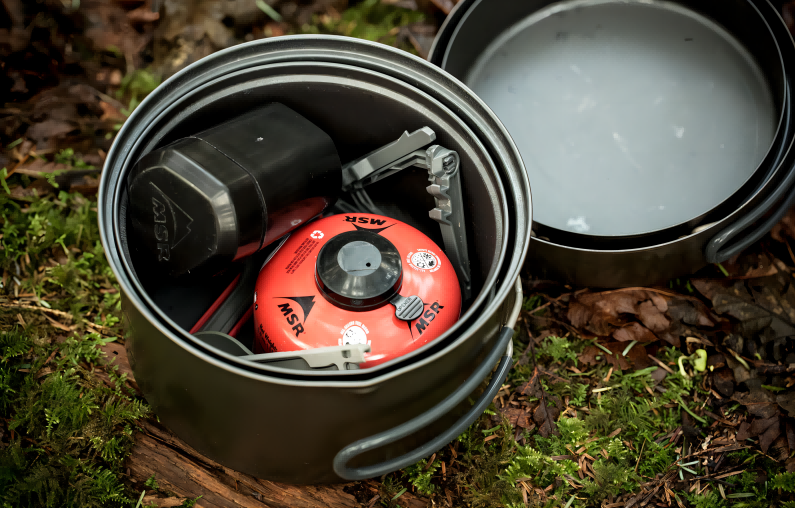Choosing the Right Backpacking Stove Fuel
In the early days of backcountry exploration, backpackers had a straightforward choice between gas, sealed in canisters, and liquid fuels stored in refillable bottles. Even with the advent of innovative stove designs, starting your backpacking journey with a gas or liquid-fuel stove is still the most practical approach.
This guide will help you navigate the world of backpacking stove fuels, providing insights into your options and helping you make informed decisions for your outdoor cooking needs. While there are exciting developments in stove technology, beginning with a gas or liquid-fuel stove offers the widest range of choices. Continue reading for an overview of fuel types, or for in-depth information on fuels and stoves, refer to our guide on "How to Choose a Backpacking Stove."
Gas vs. Liquid Fuel: Which Is Ideal?
In a nutshell, gas is favored for its convenience, while liquid fuel offers unmatched versatility. Let's delve into the advantages and disadvantages of both gas and liquid fuels. We'll also touch on alternative fuel options.
Gas Fuel
Gas stoves are designed to connect to pre-filled and pre-pressurized fuel canisters, typically containing a blend of propane and isobutane.
Pros:
Cons:
Liquid Fuel
Liquid fuel stoves typically attach to refillable fuel bottles, containing fuels like white gas, kerosene, unleaded auto gas, or other alternatives.
Pros:
Cons:
Note on Recycling Empty Fuel Canisters: While gas canisters are single-use, it's worth noting that liquid fuel for stoves also comes in single-use cans. Although you can refill them multiple times, eventually, they need to be disposed of as hazardous waste. Check local waste collection and recycling regulations for guidance. If you opt for a gas-canister stove, tools like Jetboil's CrunchIt™ can enhance your recycling options. However, some locations may still classify even empty gas canisters as hazardous waste.
Other Fuel Options
Twigs: Brands like BioLite, Solo, and Vargo offer stoves fueled by readily available wooden twigs found in the backcountry. While these stoves can have advanced features like recharging capabilities, your fuel source isn't always guaranteed. Additionally, Leave No Trace ethics may restrict twig collection in some areas.
Solid Fuel: Brands like Esbit produce lightweight, cost-effective stoves that use special fuel tablets. Drawbacks include a noticeable odor and the tendency to leave a sticky residue on cookware.
Alcohol: Brands like Solo and Vargo also manufacture stoves that burn denatured alcohol. Some backpackers even create their own alcohol stoves from soda cans. These stoves may lack the precision and ease of use of other options, but are an inexpensive and ultralight choice, popular among thru-hikers. Denatured alcohol is relatively easy to find in the United States.
Ultimately, the choice of backpacking stove fuel should align with your specific needs, environment, and cooking preferences. Explore your options, consider your trip's conditions, and select the fuel that best suits your adventure.
